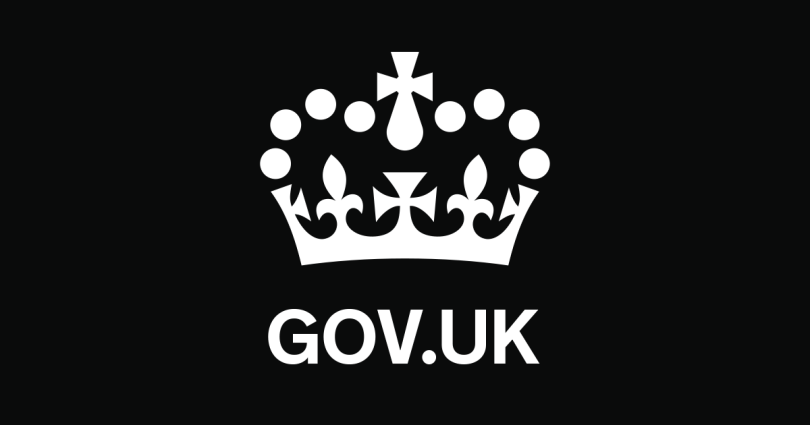[ad_1]
Interpreting this report
The report provides detailed updates on known, high consequence infectious disease (HCID) events around the world as monitored by UK Health Security Agency’s (UKHSA, formerly Public Health England) epidemic intelligence activities.
It is divided into 2 sections covering all the defined HCID pathogens. The first contains contact and airborne HCIDs that have been specified for the HCID Programme by NHS England. The second section contains additional HCIDs that are important for situational awareness.
Each section contains information on known pathogens and includes descriptions of recent events. If an undiagnosed disease event occurs that could be interpreted as a potential HCID, a third section will be added to the report.
Likelihood assessment
Included for each disease is a ‘likelihood assessment’ – the likelihood of a case occurring in the UK – based on past UK experience and the global occurrence of travel-associated cases. There are currently 3 categories: Low, Very Low and Exceptionally Low.
When considering clinical history, it is important to remember that cases can and do occur outside of the usual distribution area. It is not possible to assess accurately the risk of cases presenting to healthcare providers in England but taken together it is inevitable that occasional imported cases will be seen.
Events found during routine scanning activities that occur in endemic areas will briefly be noted in the report. Active surveillance, other than daily epidemic intelligence activities, of events in endemic areas will not be conducted (for example, actively searching government websites or other sources for data on case numbers).
The target audience for this report is any healthcare professional who may be involved in HCID identification.
Incidents of significance of primary HCIDs
Contact HCIDs
Crimean-Congo haemorrhagic fever (CCHF)
| Geographical risk areas | Endemic in Central and Eastern Europe, Central Asia, the Middle East, East and West Africa. First locally acquired case in Spain 2016 (HAIRS risk assessment). |
|---|---|
| Sources and routes of infection | • bite from or crushing of an infected tick • contact with blood or tissues from infected livestock • contact with infected patients, their blood or body fluids |
| UK experience to date | Two confirmed cases (ex-Afghanistan 2012, ex-Bulgaria 2014). |
| Likelihood assessment | Low – rarely reported in travellers (23 cases in world literature). |
| Recent cases or outbreaks | In September 2021, the media reported a fatal case of CCHF in a butcher from Nineveh province, Iraq. |
Ebola virus disease
| Geographical risk areas | Sporadic outbreaks in Western, Central and Eastern Africa. |
|---|---|
| Sources and routes of infection | • contact or consumption of infected animal tissue (such as bushmeat) • contact with infected human blood or body fluids |
| UK experience to date | Four confirmed cases (1 lab-acquired in the UK in 1976, 3 healthcare workers associated with West African epidemic, 2014 to 2015). |
| Likelihood assessment | Very Low – other than during the West Africa outbreak, exported cases are extremely rare. |
| Recent cases or outbreaks | No confirmed or suspected cases of Ebola virus disease were reported in September 2021. |
Lassa fever
| Geographical risk areas | Endemic in sub-Saharan West Africa . |
|---|---|
| Sources and routes of infection | • contact with excreta or materials contaminated with excreta from an infected rodent • inhalation of aerosols of excreta from an infected rodent • contact with infected human blood or body fluids |
| UK experience to date | Fourteen cases since 1971, all ex-West Africa. |
| Likelihood assessment | Low – overall, Lassa fever is the most common imported viral haemorrhagic fever (VHF) but still rare (a total of 35 imported cases reported globally since 1969). |
| Recent cases or outbreaks | In Nigeria, there have been 3,158 suspected and 379 confirmed cases of Lassa fever so far in 2021, as of 26 September. A total of 77 deaths have been reported, with a case fatality rate of 20.3%. This is lower than the cases reported in the same period in 2020 (5,705 suspected, 1,088 confirmed cases and 226 deaths).
Between 1 January and 6 September 2021, Liberia reported a total of 91 suspected cases, of which 14 (15.3%) were confirmed, with 10 deaths among confirmed cases (case fatality rate of 71%). In Guinea, 8 confirmed cases and 7 deaths (case fatality rate of 87.5%) have been reported this year, as of 20 September 2021. |
Marburg virus disease
| Geographical risk areas | Sporadic outbreaks in Central and Eastern Africa. |
|---|---|
| Sources and routes of infection | Contact with infected blood or body fluids. |
| UK experience to date | No known cases in the UK. |
| Likelihood assessment | Very Low – globally, 5 travel-related cases previously reported in the literature. |
| Recent cases or outbreaks | On 16 September 2021, the Ministry of Health of Guinea declared the end of the Marburg virus disease outbreak in Guéckédou prefecture, N’zérékoré Region. In accordance with World Health Organization (WHO) recommendations, the declaration was made 42 days after the safe and dignified burial of the only confirmed patient reported in this outbreak. This was the first-ever Marburg virus disease case reported in Guinea and in West Africa. |
Airborne HCIDs
Influenza A(H7N9) virus (Asian lineage)
| Geographical risk areas | All human infections acquired in China. |
|---|---|
| Sources and routes of infection | • close contact with infected birds or their environments • close contact with infected humans (no sustained human-to-human transmission) |
| UK experience to date | No known cases in the UK. |
| Likelihood assessment | Very Low (UKHSA risk assessment). |
| Recent cases or outbreaks | No confirmed or suspected human cases were reported in September 2021. |
Influenza A(H5N1) virus
| Geographical risk areas | Human cases predominantly in South East Asia, but also in Egypt, Iraq, Pakistan, Turkey and Nigeria. Highly pathogenic H5N1 in birds much more widespread, including in the UK. |
|---|---|
| Sources and routes of infection | • close contact with infected birds or their environments • close contact with infected humans (no sustained human-to-human transmission) |
| UK experience to date | No known cases in the UK. |
| Likelihood assessment | Very Low (UKHSA risk assessment). |
| Recent cases or outbreaks | No confirmed or suspected human cases were reported in September 2021. |
Middle East respiratory syndrome (MERS)
| Geographical risk areas | The Arabian Peninsula – Yemen, Qatar, Oman, Bahrain, Kuwait, Saudi Arabia and United Arab Emirates. |
|---|---|
| Sources and routes of infection | • airborne particles • direct contact with contaminated environment • direct contact with camels |
| UK experience to date | Five cases in total – 3 imported cases (2012, 2013 and 2018), 2 secondary cases in close family members of the second case, 3 deaths. |
| Likelihood assessment | Very Low (UKHSA risk assessment). |
| Recent cases or outbreaks | Between January and September 2021, there were 14 cases of MERS-CoV, including 6 deaths, identified globally. Of these cases, 13 were in Saudi Arabia and 1 in the United Arab Emirates. |
Monkeypox virus
| Geographical risk areas | West and Central Africa. |
|---|---|
| Sources and routes of infection | • close contact with an infected animal or human • indirect contact with contaminated material, such as bed linen |
| UK experience to date | To date, there have been 7 cases of monkeypox reported in the UK. In May 2021, a case of monkeypox was identified with prior travel from Delta State, Nigeria. Two family members were subsequently identified as having monkeypox. Prior to these 3 cases, there had been only 4 cases of monkeypox reported in the UK, including 3 cases previously imported from Nigeria (2 in September 2018 and 1 in December 2019). One other case, in 2018, was a healthcare worker who acquired infection following contact with contaminated bed linen. |
| Likelihood assessment | Very Low – reported outside Africa for the first time in 2018. |
| Recent cases or outbreaks |
Cases of monkeypox continue to be reported in Nigeria. In 2021, 79 suspected and 23 confirmed cases have been identified, as of 30 September. No deaths have been reported. During 2020, there were 8 confirmed cases in total.
In the Democratic Republic of the Congo (DRC), 2,619 cases and 70 deaths associated with monkeypox were reported between 1 January and 13 September 2021. |
Nipah virus
| Geographical risk areas | Outbreaks in Bangladesh and India. South East Asia at risk. |
|---|---|
| Sources and routes of infection | • direct or indirect exposure to infected bats • consumption of contaminated raw date palm sap • close contact with infected pigs or humans |
| UK experience to date | No known cases in the UK. |
| Likelihood assessment | Exceptionally Low – no travel-related infections in the literature. |
| Recent cases or outbreaks | On 4 September 2021, the Kerala State Health department reported an isolated case of Nipah virus disease in Kozhikode district, Kerala, India. The 12-year-old boy developed symptoms on 29 August and died on 5 September. No further cases were reported. The source of infection is under investigation. |
Pneumonic plague (Yersinia pestis)
Severe acute respiratory syndrome (SARS)
| Geographical risk areas | Currently none. Two outbreaks originating from China in 2002 and 2004. |
|---|---|
| Sources and routes of infection | • airborne particles • direct contact with contaminated environment |
| UK experience to date | Four cases related to 2002 outbreak. |
| Likelihood assessment | Exceptionally Low – not reported since 2004. |
| Recent cases or outbreaks | No confirmed or suspected human cases reported since 2004. |
Incidents of significance of additional HCIDs
Andes virus (Hantavirus)
| Geographical risk areas | Chile and southern Argentina. |
|---|---|
| Sources and routes of infection | • rodent contact (excreta or materials contaminated with excreta from an infected rodent) • person-to-person transmission described in household and hospital contacts |
| UK experience to date | No known cases in the UK. |
| Likelihood assessment | Very Low – rare cases in travellers have been reported (UKHSA risk assessment). |
| Recent cases or outbreaks | As of September, no confirmed cases of Andes virus have been reported in 2021.
A case of hantavirus has been reported in Chile by the media, however, whether the case was due to Andes virus has not been confirmed. |
Argentine haemorrhagic fever (Junin virus)
| Geographical risk areas | Argentina (central). Limited to the provinces of Buenos Aires, Cordoba, Santa Fe, Entre Rios and La Pampa. |
|---|---|
| Sources and routes of infection | • direct contact with infected rodents • inhalation of infectious rodent fluids and excreta • person-to-person transmission has been documented |
| UK experience to date | No known cases in the UK. |
| Likelihood assessment | Exceptionally Low – travel-related cases have never been reported. |
| Recent cases or outbreaks | No confirmed or suspected human cases were reported in September 2021. |
Avian Influenza A(H5N6) virus
| Geographical risk areas | Human cases have mostly been acquired in China, but one case has been reported in Laos. A second unrelated H5N6 lineage was found in birds in Korea, Japan and across Europe from 2017. No human cases have been identified with this second lineage. |
|---|---|
| Sources and routes of infection | Close contact with infected birds or their environments. |
| UK experience to date | No known cases. |
| Likelihood assessment | Very Low – not known to have occurred in travellers (UKHSA risk assessment). |
| Recent cases or outbreaks | Six avian influenza A(H5N6) cases were reported in China in September 2021, bringing the total cases reported in China in 2021 to 21. |
Avian Influenza A(H7N7) virus
| Geographical risk areas | Sporadic animal occurrence in mainland Europe and the UK. |
|---|---|
| Sources and routes of infection | • close contact with infected birds or their environments • close contact with infected humans (no sustained human-to-human transmission) |
| UK experience to date | No known cases. |
| Likelihood assessment | Very Low – human cases are rare, and severe disease even rarer. |
| Recent cases or outbreaks | No confirmed or suspected human cases were reported in September 2021. |
Bolivian haemorrhagic fever (Machupo virus)
| Geographical risk areas | Bolivia – limited to the Department of Beni, municipalities of the provinces Iténez (Magdalena, Baures and Huacaraje) and Mamoré (Puerto Siles, San Joaquín and San Ramón). |
|---|---|
| Sources and routes of infection | • direct contact with infected rodents • inhalation of infectious rodent fluids and excreta • person-to-person transmission has been documented |
| UK experience to date | No known cases in the UK. |
| Likelihood assessment | Exceptionally Low – travel-related cases have never been reported. |
| Recent cases or outbreaks | No confirmed or suspected cases were reported in September 2021. |
Lujo virus disease
| Geographical risk areas | Single case acquired in Zambia lead to a cluster in South Africa in 2008. |
|---|---|
| Sources and routes of infection | • presumed rodent contact (excreta or materials contaminated with excreta of infected rodent) • person to person via body fluids |
| UK experience to date | No known cases in the UK. |
| Likelihood assessment | Exceptionally Low – a single travel-related case has been reported. No cases have been reported anywhere since 2008. |
| Recent cases or outbreaks | No confirmed or suspected human cases reported since 2008. |
Severe fever with thrombocytopenia syndrome (SFTS)
| Geographical risk areas | Mainly reported from China (south-eastern), Japan and Korea. First-ever cases reported in Vietnam and Taiwan in 2019. Serological evidence of SFTS in Pakistan. |
|---|---|
| Sources and routes of infection | • presumed to be tick exposure • person-to-person transmission described in household and hospital contacts, via contact with blood or bloodstained body fluids |
| UK experience to date | No known cases in the UK. |
| Likelihood assessment | Exceptionally Low – not known to have occurred in travellers. |
| Recent cases or outbreaks | No confirmed or suspected human cases were reported in September 2021. |
[ad_2]
Source link








